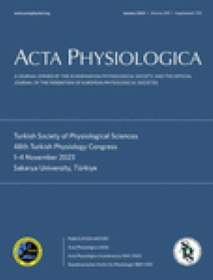Dietary Nitrate Prevents Cardiac Dysfunction in HFrEF by Improving Hemodynamics, Ameliorating Remodeling, and Resolving Inflammation
Abstract
Aims
Impaired cardiac function, reduced nitric oxide (NO) bioavailability, and inflammation are key contributors to the pathogenesis and progression of heart failure with reduced ejection fraction (HFrEF). This study aimed to investigate whether dietary inorganic nitrate supplementation can attenuate cardiac dysfunction and adverse remodeling in HFrEF by enhancing NO signaling.
Methods
Two mouse models of HFrEF, induced by myocardial infarction (MI) or transverse aortic constriction (TAC), were treated with dietary nitrate or a control diet for 4–6 weeks, initiating the treatment on day 3 after myocardial injury. Echocardiography and pressure volume (PV) loop analysis were employed to assess cardiac function and hemodynamics. Histology staining was performed to assess the degree of cardiac fibrosis. Myograph experiments were conducted to assess aortic vasorelaxation. Biomarkers related to hypertrophy, fibrosis, and inflammation were analyzed in cardiac tissues through Q-PCR analysis and immunofluorescence staining.
Results
In HFrEF mice, long-term inorganic nitrate treatment increased systolic and diastolic function, enhanced vascular relaxation, and reduced both replacement and reactive fibrosis. In the nitrate group, cardiac gene expression showed downregulation of hypertrophy-, fibrosis-, and inflammation-related markers, alongside upregulation of anti-inflammatory markers associated with M1-to-M2 macrophage polarization. Immunofluorescence confirmed reduced fibrosis and increased anti-inflammatory protein biomarkers associated with increased serum nitrate and cardiac cGMP levels.
Conclusions
Early initiation of dietary nitrate supplementation after myocardial injury enhances cardiac and vascular function, reduces fibrosis and inflammation, and holds promise as a cardioprotective strategy to reduce the progression of HFrEF through NO-signaling.


 求助内容:
求助内容: 应助结果提醒方式:
应助结果提醒方式:


